The animal kingdom is filled with countless adorable creatures, but there’s something particularly enchanting about miniature wildlife. These tiny beings often evoke strong protective instincts and an irresistible desire to hold them in the palm of your hand. While we should always respect wild animals and observe them from a safe distance, there’s no harm in appreciating their cuteness from afar. This article explores 18 diminutive wild creatures whose adorable features might make you wish you could cuddle them, even though such interactions are best left to wildlife professionals. Let’s discover these pint-sized bundles of cuteness that demonstrate nature’s remarkable ability to package charm in the smallest packages.
13. Pygmy Marmoset The World’s Smallest Monkey

Weighing just 4-5 ounces (about the same as a stick of butter) and measuring around 5 inches in length, the pygmy marmoset holds the title of the world’s smallest monkey. Native to the rainforests of South America, particularly in countries like Brazil, Colombia, Ecuador, and Peru, these tiny primates have disproportionately large eyes and fluffy tufts of fur framing their expressive faces. Their fingers are perfectly adapted for grasping thin branches as they leap through the forest canopy. Despite their diminutive size, pygmy marmosets are incredibly vocal, communicating through high-pitched trills, whistles, and chirps that can travel surprising distances through dense forest. Their small size makes them appear perpetually baby-like, triggering our natural instinct to protect and cuddle them, though they’re best admired in their natural habitat.
12. Etruscan Shrew Tiny Heart, Big Personality

The Etruscan shrew holds the distinction of being the smallest mammal by weight, tipping the scales at a mere 1.8 grams—about the weight of a paperclip. This minuscule mammal, found across parts of Europe, North Africa, and Asia, measures just 1.5-2 inches in length, with a body smaller than your thumb. Despite their tiny size, these shrews have fascinating physiological adaptations: their hearts beat at an astonishing 1,200 beats per minute (compared to a human’s 60-100), and they must eat 1.5-2 times their body weight daily just to survive. Etruscan shrews are remarkably active hunters, using their highly sensitive whiskers to detect prey in complete darkness. Their velvety fur and button-like eyes make them undeniably cuddle-worthy, though their lightning-fast movements and high-strung nature would make them challenging pets, even if keeping them weren’t illegal and unethical.
11. Dwarf Mongoose Africa’s Smallest Carnivore
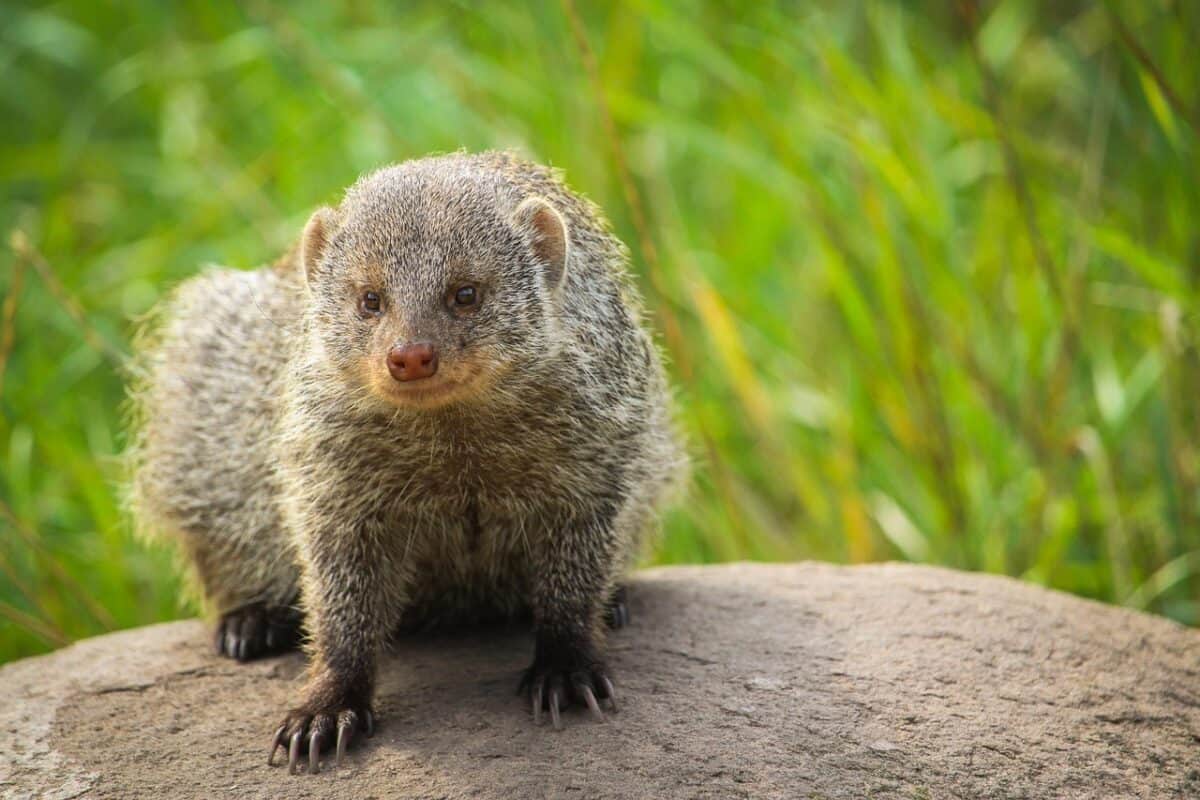
Don’t let their size fool you—dwarf mongooses may be tiny, but they’re formidable little predators. As Africa’s smallest carnivorous mammals, these social creatures weigh just 7-11 ounces and stand about 7-8 inches tall. Found across the eastern and southern regions of Africa, dwarf mongooses live in cooperative family groups of 8-30 individuals led by a dominant breeding pair. Their adorable features include round ears, pointed snouts, and expressive eyes that constantly scan their surroundings for danger. These mongooses are known for their playful behavior, often seen tumbling and wrestling with each other, which only adds to their cuddle appeal. They’ve evolved a fascinating symbiotic relationship with hornbills, where the birds act as lookouts while the mongooses flush out insects for both species to eat. Their loyal family dynamics and protective nature toward group members make them all the more endearing.
10. American Pygmy Shrew North America’s Featherweight Champion
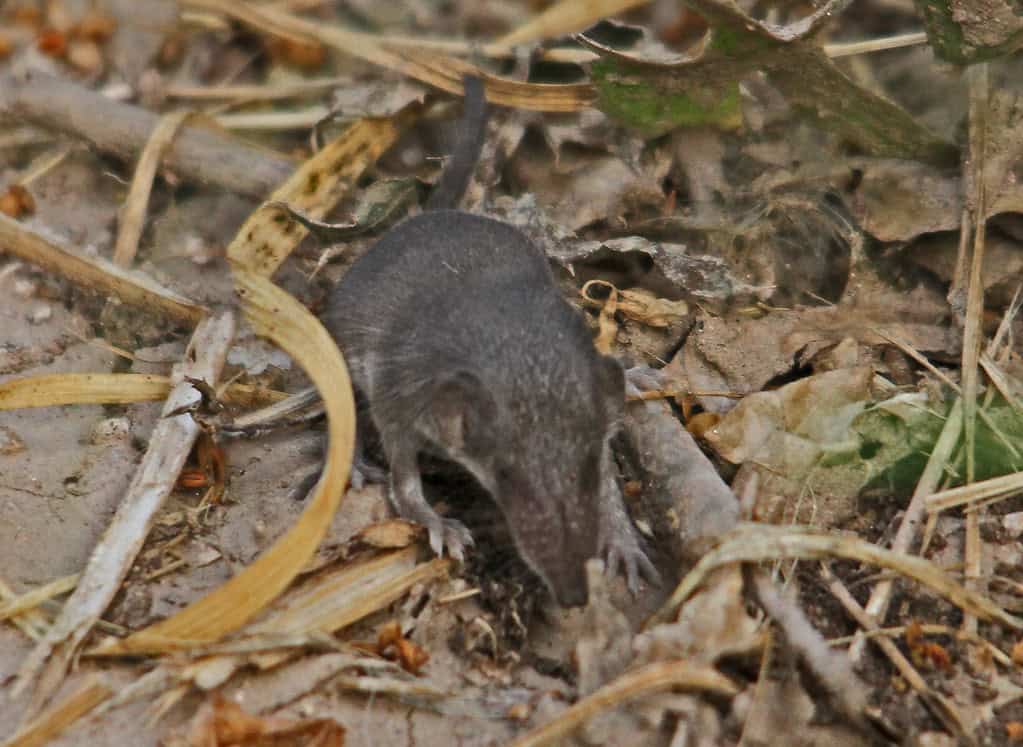
The American pygmy shrew holds the title of North America’s smallest mammal, weighing a mere 2-4 grams and measuring just 3-4 inches including its tail. These minute insectivores have soft, velvety fur ranging from reddish-brown to grayish-brown, with lighter undersides that give them a two-toned appearance. Found in forests, wetlands, and grasslands across Canada and the northern United States, these tiny creatures have metabolisms running at such high speeds that they must eat almost constantly, consuming up to three times their body weight daily. Their pointed snouts, nearly invisible ears, and tiny bead-like eyes give them an eternally youthful appearance that triggers our nurturing instincts. American pygmy shrews are remarkable swimmers and can even run across the surface of water for short distances—a feat that seems almost magical coming from such a tiny creature. Their soft fur and diminutive size make them appear incredibly cuddleable, though their lightning-fast movements and specialized dietary needs make them impossible candidates for handling.
9. Bee Hummingbird The Feathered Jewel

The bee hummingbird stands as nature’s miniature masterpiece, holding the title of the world’s smallest bird species. Native exclusively to Cuba, these iridescent marvels weigh less than 2 grams—lighter than a penny—and measure just over 2 inches from beak to tail. The males display spectacular metallic plumage that shifts between fiery red, emerald green, and sapphire blue depending on the light angle. Despite their tiny size, bee hummingbirds possess remarkable capabilities, beating their wings up to 80 times per second and visiting up to 1,500 flowers daily. Their nests are architectural wonders, constructed of spider silk, plant fibers, and lichen, measuring just an inch in diameter—about the size of a quarter. The female lays eggs the size of coffee beans, perhaps the smallest of any bird. Their diminutive proportions, combined with their jewel-like appearance and the gentle humming sound produced by their rapid wingbeats, make them irresistibly endearing creatures that many bird enthusiasts dream of holding, though conservation concerns and their delicate nature make this impossible.
8. Pygmy Possum Australia’s Pocket-Sized Marsupial

Australia’s pygmy possums exemplify cuteness in miniature form, with their round ears, large eyes, and long prehensile tails. Weighing between 15-43 grams (depending on the species) and measuring just 7-11 centimeters in body length, these nocturnal marsupials are among the world’s smallest. The mountain pygmy possum, found only in Australia’s alpine regions, is particularly special as it’s the only Australian marsupial that hibernates during winter. These tiny creatures have adapted to feed primarily on Bogong moths, seeds, and nectar, using their specialized brush-tipped tongues to collect pollen and nectar from flowers. Their large eyes, designed for night vision, give them a perpetually surprised expression that humans find irresistibly cute. During cold weather, pygmy possums can enter a state of torpor to conserve energy, curling into tight balls with their fluffy tails wrapped around their bodies like a blanket. This pose, combined with their soft fur and button-like features, makes them appear as living plush toys, though they remain wild animals adapted to specific ecological niches.
7. Least Weasel Small Body, Fierce Spirit
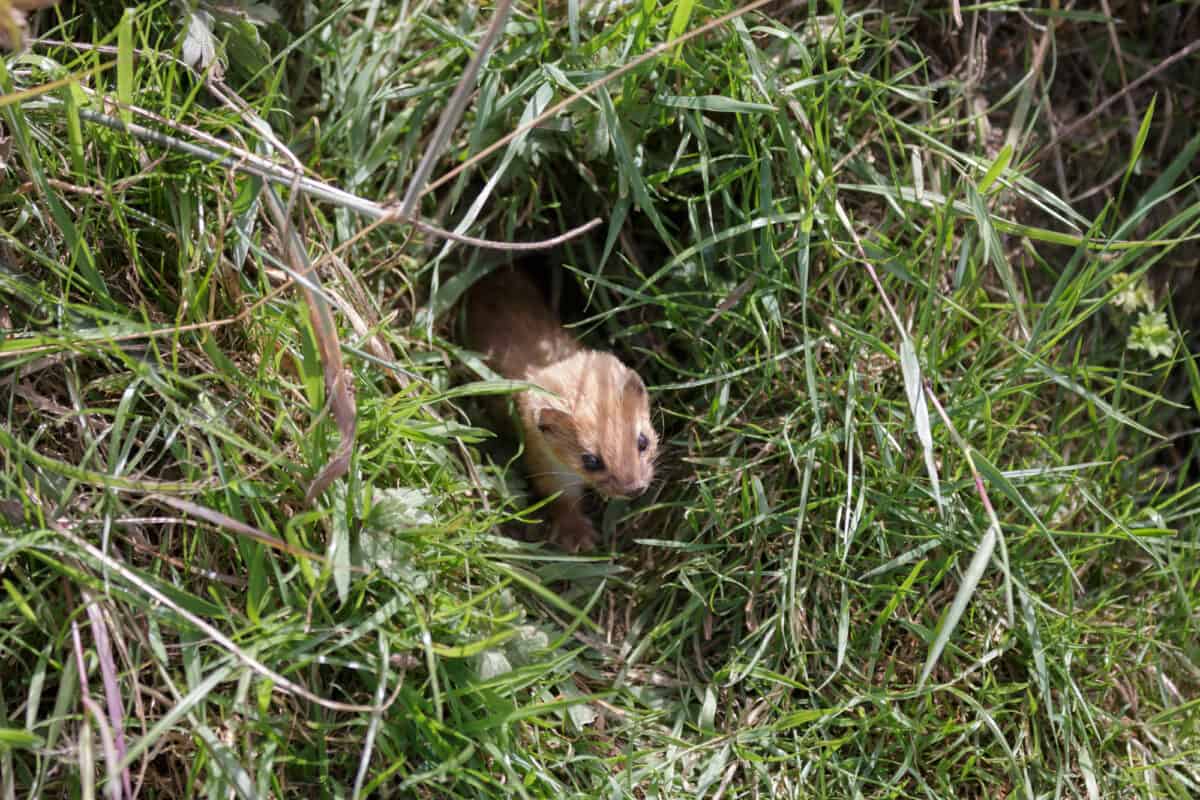
Don’t let the least weasel’s adorable appearance fool you—this tiny carnivore is one of nature’s most efficient predators. As the smallest member of the Carnivora order, these weasels typically weigh just 1-2 ounces and measure 6-8 inches in length, including their short tails. Found across North America, Europe, and Asia, least weasels have sleek bodies with light brown fur that turns white in northern populations during winter. Their round ears, button-like black eyes, and whiskered snouts give them an undeniably cuddly appearance that belies their predatory nature. These diminutive hunters can take down prey much larger than themselves, including rats and rabbits, thanks to their lightning-fast reflexes and powerful bite. Least weasels have incredibly high metabolisms that require them to eat about 40% of their body weight daily. When not hunting, they can be surprisingly playful, performing “weasel war dances”—a series of hops, jumps, and rolls that make them even more endearing to human observers, though their wild temperament makes them unsuitable for handling.
6. Bumblebee Bat The Flying Thimble
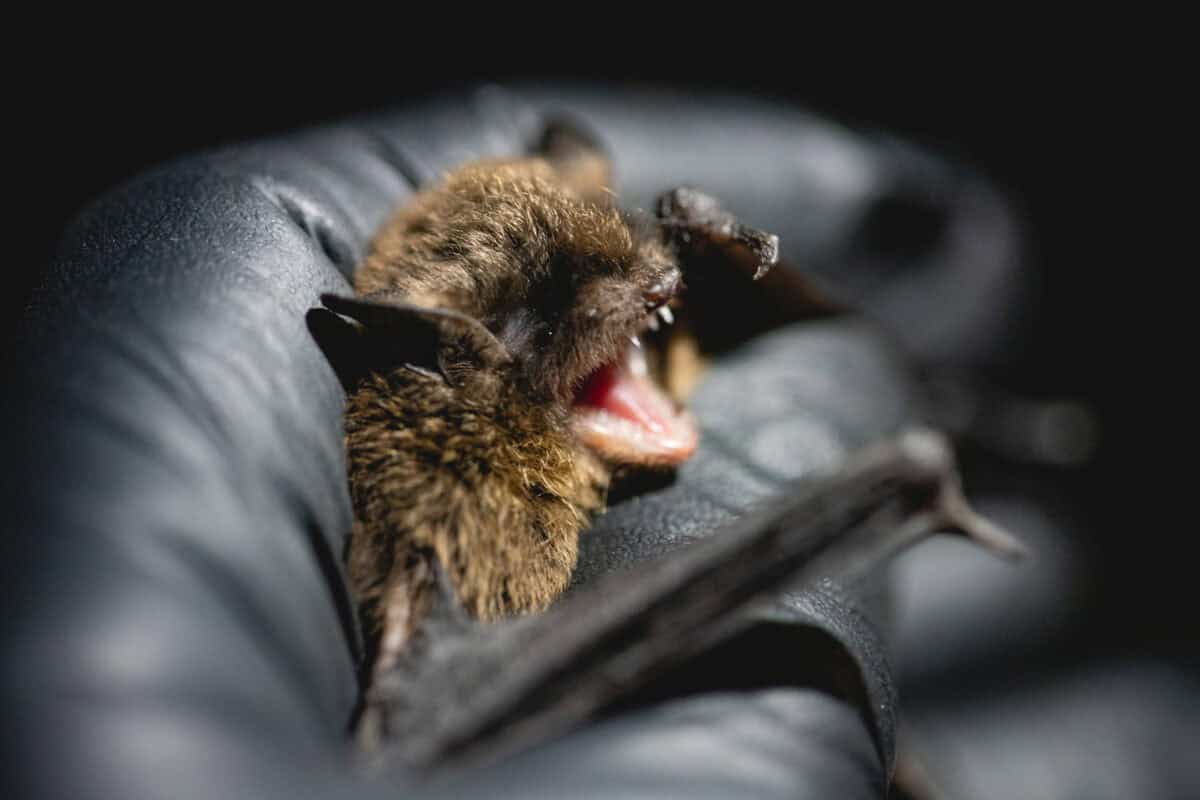
The bumblebee bat, also known as Kitti’s hog-nosed bat, holds the distinguished title of the world’s smallest mammal by skull size. These remarkable creatures weigh just 2 grams—about the same as a penny—and measure a mere 1.1-1.3 inches in body length, making them no larger than a large bumblebee (hence their common name). Found only in a small region along the Thai-Myanmar border, these rare bats have distinctive pig-like snouts, relatively large ears, and reddish-brown fur that gives them a warm, teddy bear-like appearance when viewed up close. Despite their minuscule size, bumblebee bats are perfectly adapted for their ecological niche, using echolocation to navigate through limestone caves and capture tiny insects in mid-flight. Their wings span about 6-7 inches, appearing disproportionately large compared to their tiny bodies, which only enhances their appeal. The bumblebee bat’s endangered status and specialized habitat requirements make their protection critical, though their adorable appearance with eyes that seem almost too big for their faces makes them irresistibly cute to human observers.
5. Dwarf Rabbit Nature’s Miniature Bunnies
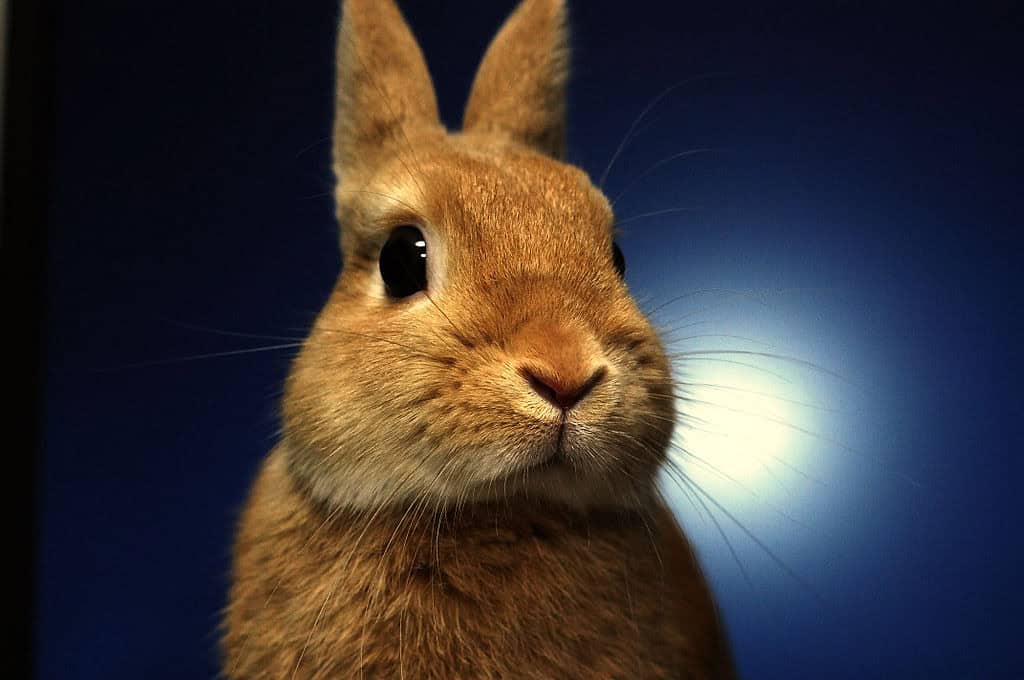
Wild dwarf rabbits represent some of nature’s most perfectly proportioned miniatures. While many dwarf rabbit varieties have been domesticated, their wild counterparts such as the pygmy rabbit of North America and the Amami rabbit of Japan remain fascinating examples of natural selection favoring smaller body sizes in specific environments. The pygmy rabbit, weighing just 0.8-1 pound, is North America’s smallest native rabbit species and one of only two rabbit species that dig their own burrows. These diminutive lagomorphs have dense, soft fur that varies from grayish-brown to cinnamon, with their compact bodies measuring just 9-11 inches in length. Their oversized eyes, round heads, and small ears give them a perpetually juvenile appearance that triggers strong protective instincts in humans. The Amami rabbit, found only on two small Japanese islands, is an ancient species sometimes called a “living fossil” with distinctive short ears and a dark brown coat. Both species exhibit the characteristic twitching nose and alert posture that make rabbits universally appealing, but their small size amplifies their cuteness factor to irresistible levels.
4. Fennec Fox Desert’s Tiny Canid

The fennec fox stands as perhaps one of the most cuddle-worthy wild creatures on our planet, with its most distinctive feature being its extraordinarily large ears that can grow up to 6 inches long—disproportionately huge compared to its 9-16 inch body. Native to the Sahara Desert and parts of the Arabian Peninsula, these nocturnal foxes weigh just 2-3 pounds, making them the smallest canid species in the world. Their cream-colored coats, black-tipped tails, and expressive almond-shaped eyes give them an almost cartoon-like appeal. Those massive ears serve multiple purposes—they dissipate heat and allow the fennec to hear prey moving underground, even insects scurrying beneath the sand. Their tiny paws are covered with fur to protect against hot desert surfaces and provide excellent traction for digging elaborate burrow systems. Fennec foxes live in family groups and communicate through a remarkable range of vocalizations including purrs, whimpers, and a high-pitched bark. Though they’ve occasionally been kept as exotic pets, their natural wild instincts make them challenging companions, and their conservation status means they’re best appreciated from a distance.
3. Madame Berthe’s Mouse Lemur Primate in Miniature
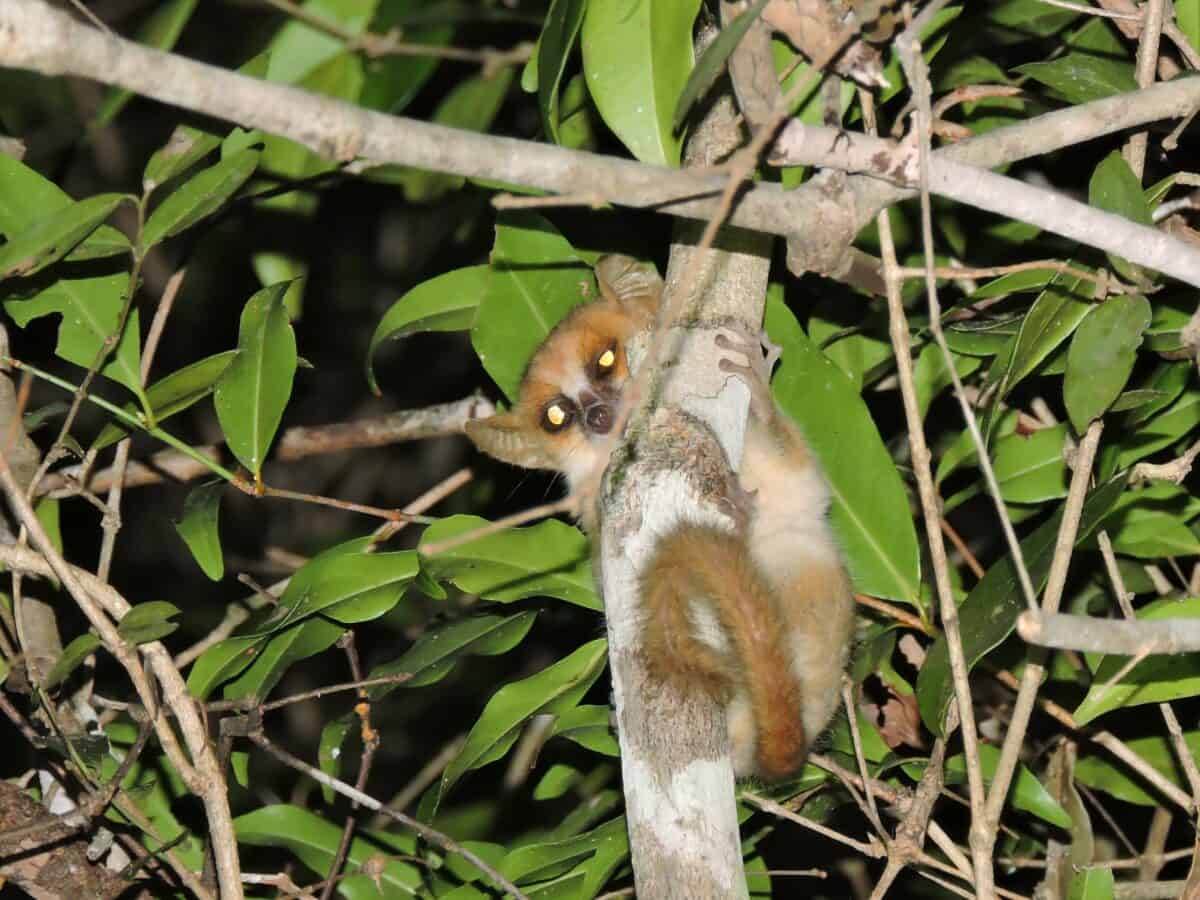
Madame Berthe’s mouse lemur holds the distinction of being the world’s smallest primate, with an average body weight of just 30 grams (about the weight of a slice of bread) and a body length of approximately 3.5 inches—small enough to fit in a teacup. Native exclusively to Madagascar’s Kirindy Mitea National Park, these tiny nocturnal primates have large, forward-facing eyes that dominate their rounded faces, giving them an expression of perpetual curiosity. Their soft, reddish-brown fur and nimble, long-fingered hands make them appear like miniature teddy bears with exceptional dexterity. Despite their diminutive size, these mouse lemurs are remarkably agile, capable of leaping several feet between branches as they forage for insects, fruit, flowers, and nectar in the forest canopy. During Madagascar’s dry season, they can enter a state of torpor to conserve energy, tucking their tiny bodies into tree hollows. Their critically endangered status makes conservation efforts crucial, as deforestation threatens their limited habitat. The combination of their primate features in such a tiny package creates an almost irresistible appeal, though their nocturnal lifestyle and endangered status mean they’re best appreciated through conservation efforts rather than direct interaction.
2. Paedophryne amauensis The World’s Smallest Vertebrate

Discovered in 2009 in Papua New Guinea, Paedophryne amauensis holds the remarkable distinction of being the world’s smallest known vertebrate. These miniature frogs measure just 7.7 millimeters (0.3 inches) in length—smaller than many insects and roughly the size of a housefly. Despite their minuscule proportions, these tiny amphibians possess all the anatomical features of larger frogs, including a backbone, functioning organs, and tiny limbs perfectly adapted for their leaf litter habitat. Their brownish coloration blends seamlessly with the forest floor, where they hunt for even smaller prey like mites and tiny insects. Perhaps their most endearing quality is their voice—despite being barely visible to the human eye, these frogs produce distinct cricket-like calls that allow them to communicate with potential mates. Their tiny size, coupled with their perfectly formed frog features, creates a fascinating example of how evolution can miniaturize complex organisms. While their diminutive size makes them challenging to observe in the wild, photographs revealing their perfectly proportioned bodies and tiny, expressive faces showcase why even the smallest vertebrates can trigger our nurturing instincts.
1. Speckled Padloper Tortoise Shell of Cuteness
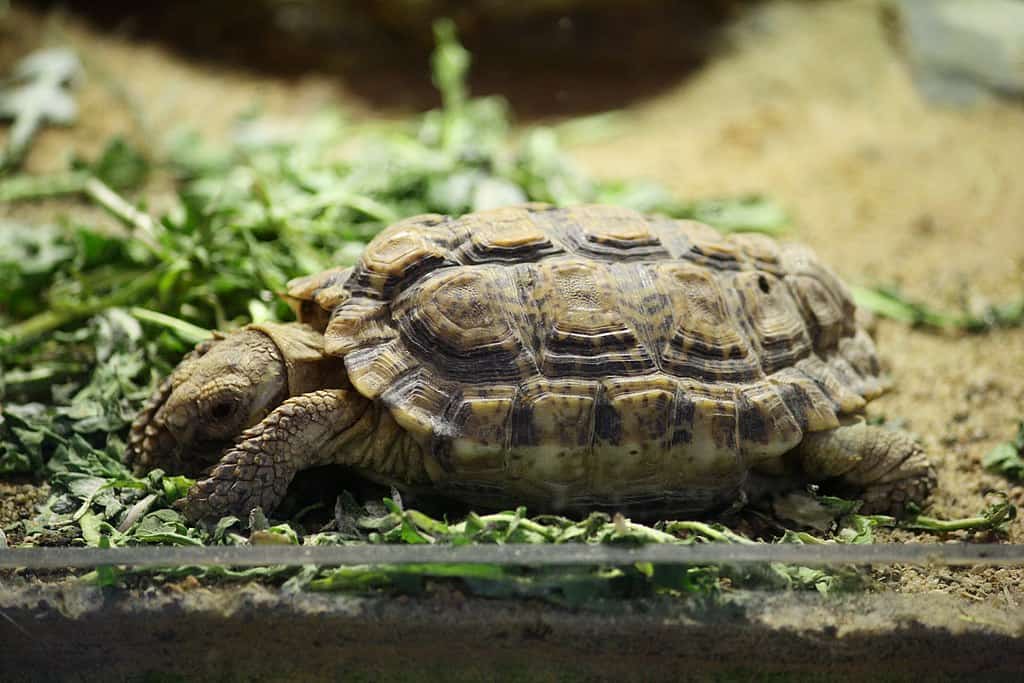
The speckled padloper tortoise (Homopus signatus) holds the distinction of being the world’s smallest tortoise species, with adults typically measuring just 6-8 centimeters in length and weighing around 95-165 grams. Native to the rocky terrain of South Africa’s Northern Cape Province, these tiny reptiles have evolved to thrive in harsh, arid conditions. Their carapaces (upper shells) display beautiful speckled patterns in shades of brown, yellow, and orange that provide excellent camouflage among the rocks and sparse vegetation of their natural habitat. Unlike many tortoise species that dig burrows, padlopers seek shelter in natural rock crevices, their small size allowing them to access tight spaces inaccessible to predators. Their endearing features include proportionally large eyes, stubby limbs covered in protective scales, and expressions that seem almost thoughtful as they methodically forage for succulents and other desert plants. Female padlopers lay just one egg at a time—proportionally large compared to their body size. Their unhurried movements, diminutive proportions, and the contrast between their ancient reptilian lineage and toy-like appearance make them irresistibly charming, though their protected status means observation should be limited to conservation programs.
Conclusion:

From the cloud forests of South America to the deserts of Africa and the leaf litter of Papua New Guinea, the world is teeming with tiny wild creatures that melt hearts with their petite size and charming features. Whether it’s the jewel-like shimmer of a bee hummingbird, the wide-eyed innocence of a mouse lemur, or the improbable miniaturization of the Paedophryne amauensis frog, each species offers a glimpse into nature’s ability to combine function and adorableness in the most unexpected ways. While it’s tempting to imagine cuddling these miniature marvels, it’s important to remember that they thrive best in the wild, where their behaviors and ecosystems remain undisturbed. Admiring their cuteness from afar not only respects their natural boundaries but also underscores the need to protect their fragile habitats. After all, preserving these tiny treasures ensures that future generations can also experience the wonder of creatures so small, yet so profoundly enchanting.
- 14 Times Nature Shocked Scientists - August 20, 2025
- 12 Ways Extreme Weather Impacts Spider Populations - August 20, 2025
- 10 Animals That Could Make a Comeback Through Cloning - August 20, 2025

